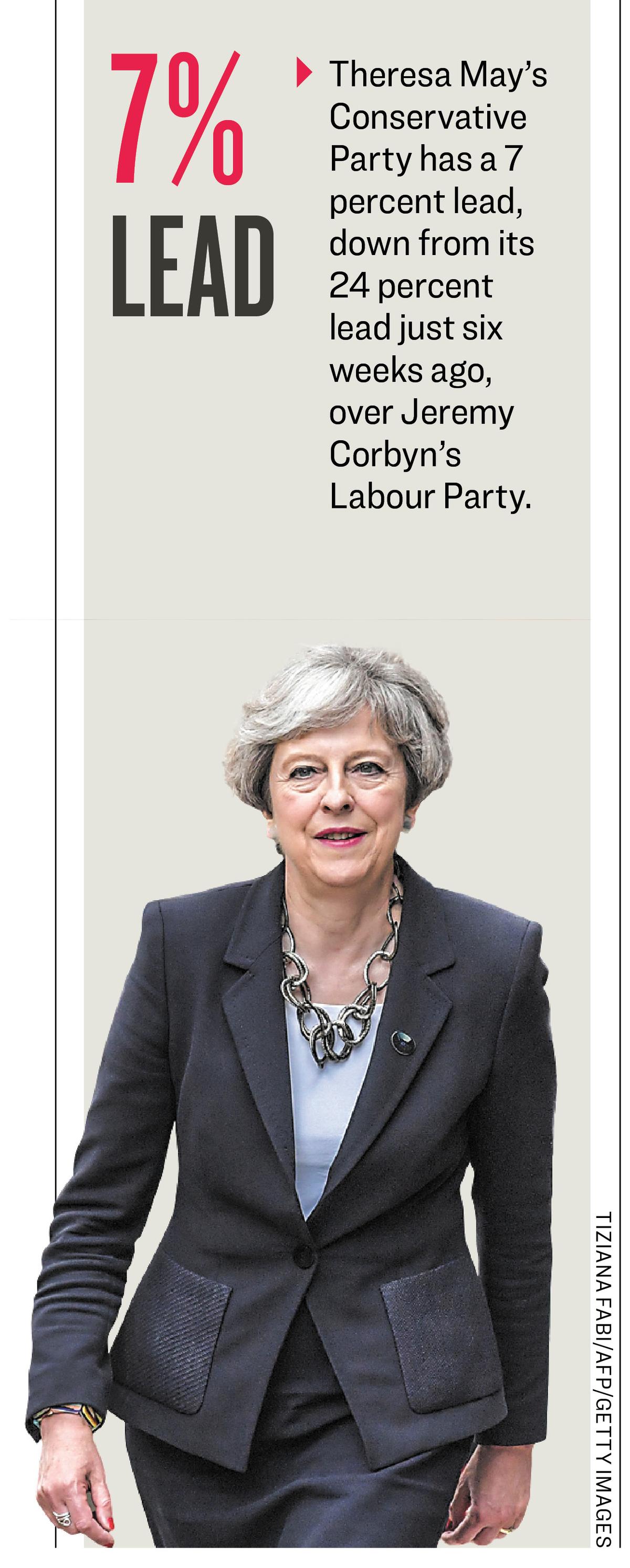BIRMINGHAM, England—When the U.K. general election was announced a month ago, it looked like a historical shoo-in for the incumbent Conservative Party.
But an unexpected surge in Labour support has thrown down the gauntlet to pollsters still nursing their wounds after failing to predict the results of Britain’s vote on leaving the European Union and the 2015 general election.
Polling six weeks ago put the Conservative Party at 48 percent and the Labour Party at 24 percent, with some pollsters predicting this would translate to a historic majority of over 430 seats out of 650 in the lawmaker chamber.
But the gap in the polls has been steadily closing. With the nation heading into the final week of campaigning, polls put the Conservative lead at just 7 percent, with 43 percent saying they intend to vote Conservative, versus 36 percent Labour.
Most political analysts still expect a Conservative victory on June 8.






